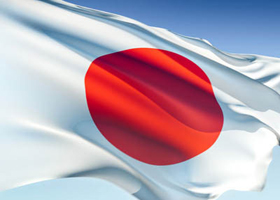


“All these have created traumatic shocks to the system and affected markets,” said Pho, adding that efforts to address these issues by central banks and governments only seem to have created more problems.
Pho underscored the fact that investors in Asia have felt the effects of rising geopolitical tensions in the world acutely. “Investors in Asia have put up with nearly daily threats from North Korea and provocations in the form of military skirmishes and economic sanctions,” said Pho, adding that Asian investors must look beyond geopolitical and economic uncertainty to uncover companies that can thrive in spite of all the noise. Taking a bottom-up approach is key in this respect.
“Allocations to Japanese equities would not be possible if investors took heed of the economic prognostications for Japan,” Pho explained. “With its aging population, heavy debt, deflation, poor corporate governance and political instability, most global investors have paid little attention to Japan and even avoided it altogether.” That’s a missed opportunity, said Pho, adding that macroeconomic instability should not affect resilient business — and there are quite a few in Japan, he noted.
When it comes to geopolitical risk, “it’s one thing to have an opinion on the macroeconomic environment, but it’s very hard to translate it into profitable investment strategies,” he said. Which is why a bottom-up approach is key.
Pho used the example of Unicharm, a leading Japanese manufacturer of diapers. He explained that the company has steadily grown its profits and kept debt low, generating steady returns for investors despite Japan’s challenges.
Safety dance
Investors should also seek out a “margin of safety,” said Pho — those companies with room to grow, even in difficult or uncertain economic conditions. “A margin of safety comes from purchasing companies that are below their intrinsic values,” he explained. This will help investors capitalize on poor market sentiment and investor confidence, he said, especially in Japan where there is a good deal of negativity about the market. As Pho explained, for most of his career, Japan has been in a multi-year bear market, hitting a 25-year low in 2011. “In that depressed market environment there was no shortage of good stock opportunities,” he said. “Rising geopolitical risk could lead to future stock market weakness and even a dramatic sell-off, but that affords investors the opportunity to buy excellent companies at attractive prices.”
Finally, patience is a virtue in countries like Japan, where it’s important to be an “owner rather than a renter of businesses,” noted Pho. Thinking long term is key to finding companies with sustainable advantages. And in uncertain times, patience is key.
